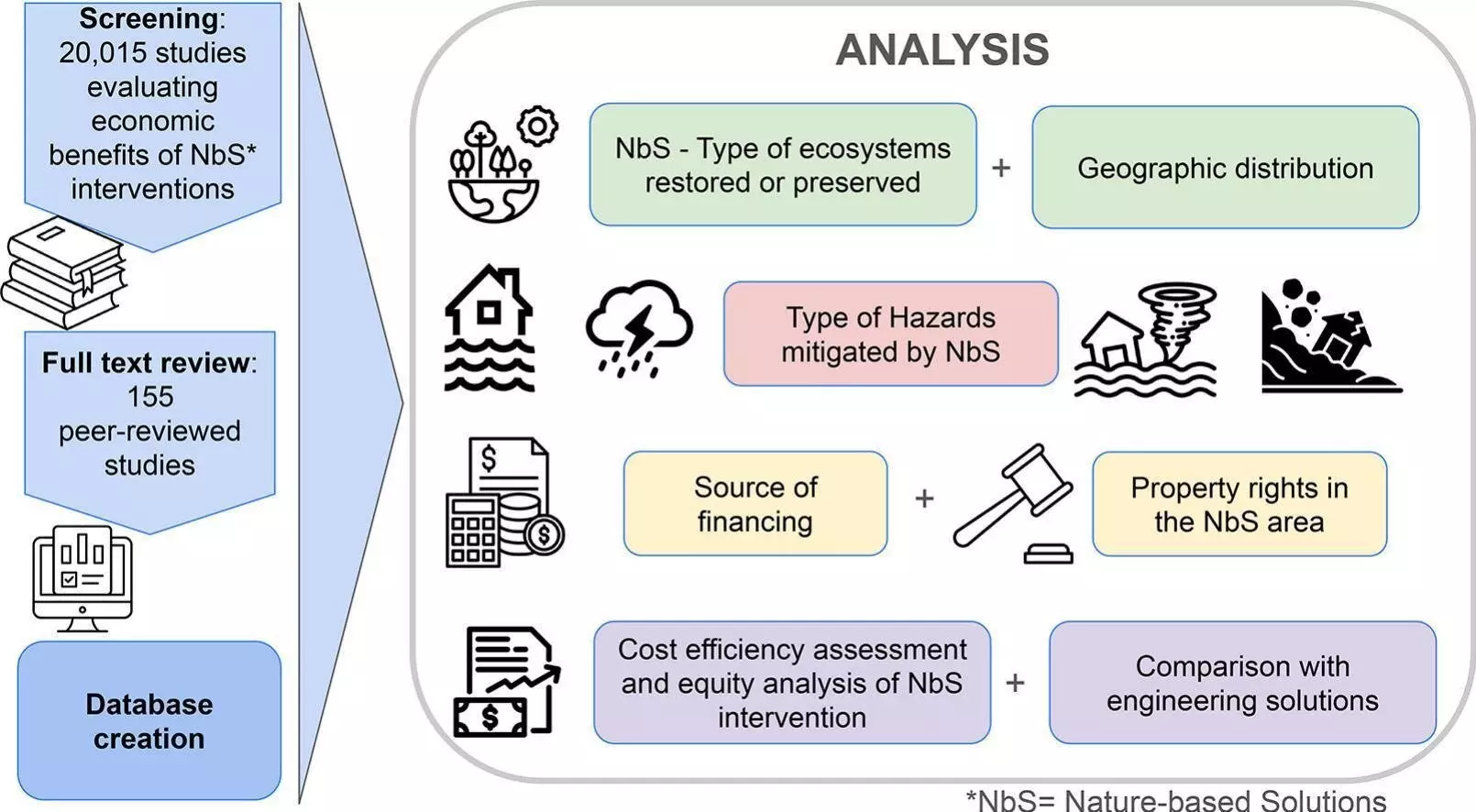The recent global assessment conducted by researchers at the University of Massachusetts Amherst sheds light on the potential of nature-based solutions (NbS) in addressing the escalating risks posed by natural disasters in the face of climate change. The findings, published in the Science of The Total Environment, underscore the cost-effectiveness and efficacy of NbS in mitigating hazards ranging from floods to heat waves. This article critically examines the key insights from the research and delves into the implications for policy-making and financing of NbS.
NbS entail interventions that leverage ecosystems to provide benefits to both society and the environment. These solutions encompass preserving, sustainably managing, or restoring ecosystems to enhance resilience against natural disasters and support climate adaptation and mitigation efforts. For instance, restoring wetlands can offer a more effective approach to addressing coastal flooding compared to traditional engineering solutions like seawalls. While NbS are increasingly recognized in global climate policies, there remains a gap in understanding their cost-effectiveness and broader societal impacts.
The assessment revealed that NbS emerge as a consistently cost-effective strategy in mitigating hazards, with 71% of studies demonstrating their efficacy across various contexts. Ecosystem-based interventions associated with mangroves, forests, and coastal ecosystems were highlighted as particularly effective in reducing risks. Moreover, the comparison between NbS and engineering solutions indicated that NbS outperformed the latter in most cases, underscoring the potential of nature-based approaches in disaster risk reduction.
Despite their proven effectiveness, the study highlighted the underestimation of the additional benefits of NbS beyond hazard mitigation. Factors such as biodiversity conservation, climate resilience, and support for marginalized communities are often overlooked in assessments due to the challenges in quantifying their value. The intrinsic value of environmental assets and the cultural significance of ecosystems present complexities in the evaluation of NbS, leading to their undervaluation in decision-making processes.
A critical insight from the research is the predominant role of the public sector in financing NbS projects, even when they involve private properties. To achieve a global scale impact, there is a pressing need for increased funding, with a call for greater involvement of the private sector. The transformative upscaling of NbS necessitates a collaborative approach to financing, with both public and private contributions playing a crucial role in unlocking the full potential of nature-based solutions for disaster risk management.
The global assessment on NbS underscores their relevance as a cost-effective and sustainable approach to disaster risk mitigation in the era of climate change. While the benefits of NbS are clear, there is a need for a more comprehensive evaluation of their societal, environmental, and economic impacts. Policymakers and stakeholders must prioritize the integration of NbS into resilience strategies and explore innovative financing mechanisms to support their widespread implementation. By harnessing the power of nature-based solutions, we can build a more resilient and sustainable future for all.


Leave a Reply